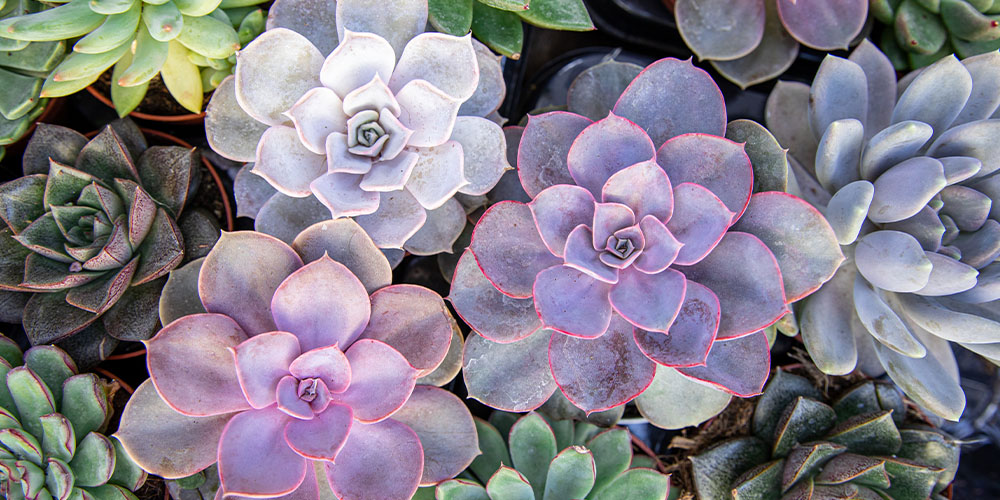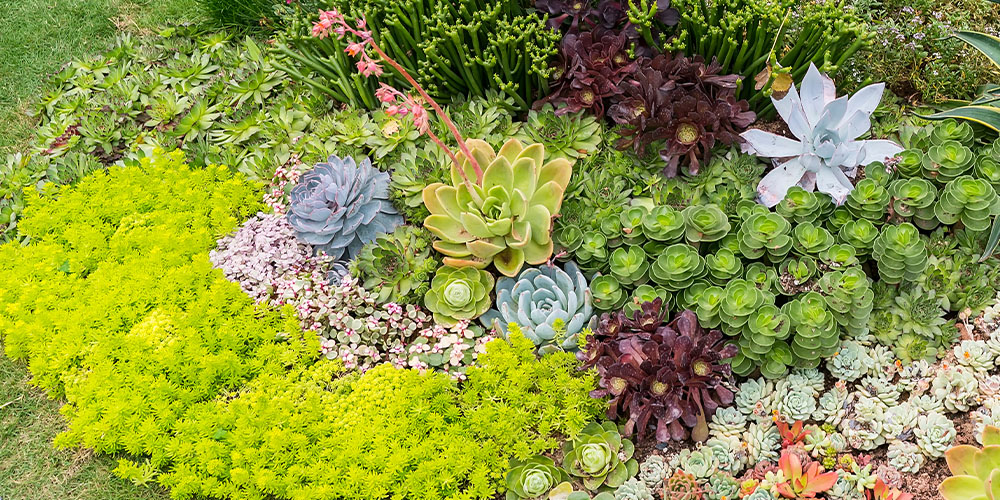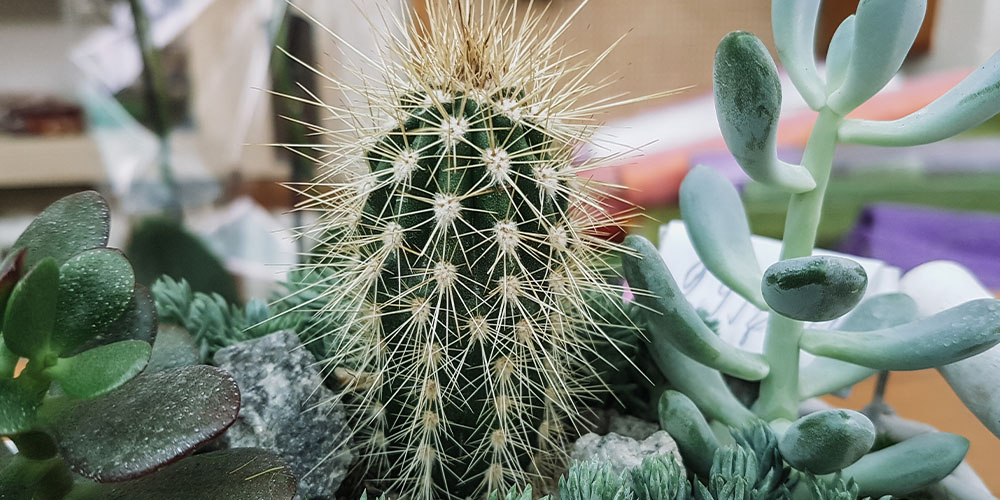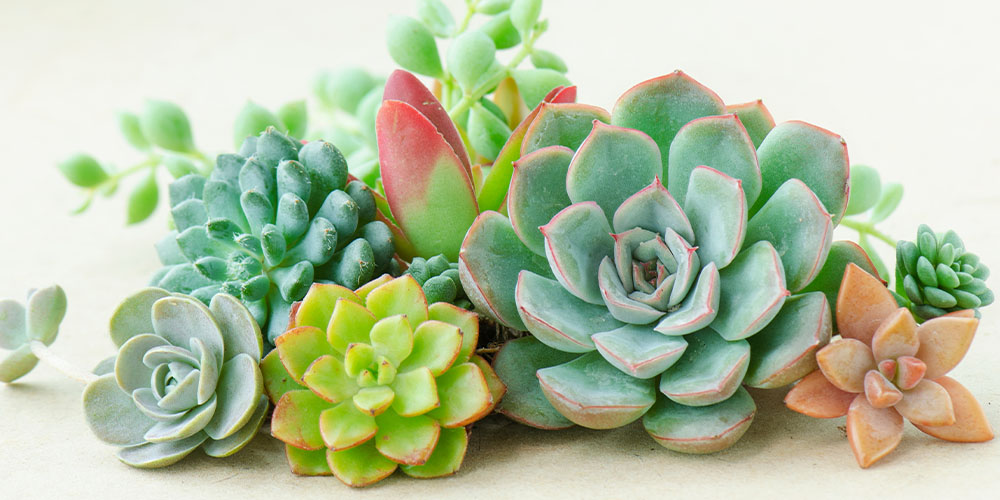Succulents are simple to care for, bring beautiful colors to your garden, and aren’t intimidated by the heat. With wonderfully shaped leaves, they’re a gem in your garden. Plus, they have a low impact on the environment with minimal water requirements. Here’s an introduction to these beautiful plants and how to grow them!

What is a Succulent?
You’ll recognize a succulent by its thick, fleshy leaves adapted to store water. Most of them originate in the desert or semi-arid regions with infrequent rain and high temperatures. The moisture-retaining leaves result in distinct shapes and personalities. Aloes, echeverias, and kalanchoes are just a few examples of succulents.
What Makes Succulents Unique?
- Leaves: succulents are not the biggest plants in a garden, but their eye-catching leaves nevertheless draw your attention. Many feature mesmerizing circular clusters that stand out like works of art on a desert floor. The juicy or fleshy quality, from which they get their name, brings texture into your garden that you won’t get from any other plants.
- Color: it may be surprising, but many desert plants, like succulents, feature beautiful colors. From the blue leaves of echeveria to the zebra stripes of hawthoria, they venture well beyond the typical green leaves that we expect from plants. Plus, many succulents open up incredible flowers that rise and bloom out of nowhere, like the desert in springtime after a good rain.
- Eco-Friendly: succulents are ultra low-maintenance and low-impact plants. They prefer poor soils, which means they don’t need fertilizer. Plus, they thrive in high heat and don’t need a lot of water. In other words, you can easily plant a succulent garden without expanding your water footprint or water bill.
How to Care For Succulents
Succulents are plants that give a lot of beauty and don’t ask for much in return. They actually thrive in poor or sandy soil as long as it’s well-draining, they don’t need water very often, and they can survive droughts. Some species need full sun, while others need protection from the bright rays, so be sure to double-check when you bring a new succulent home.

How Do You Make a Succulent Garden?
Many succulents grow low to the ground in compact shapes. They don’t tend to sprawl or grow very quickly, so you can arrange them close together or even have them touching. The result is a beautiful carpet of succulents, each with its unique color and design.
Other Tips for a Succulent Garden
- Rocks and Stones: since succulents are heat-loving creatures, they do well among rocks and stones. Some gardeners add pebble mulch around them, often in intricate designs. You can also plant them in a small rock garden or place them artfully among broken pottery.
- Container Gardens vs. Year-Round: some succulents can’t survive our winters, but you can transplant them outside into a container garden or in the ground for the spring, summer, and fall. Other succulents are hardy enough to grow outdoors year-round.

Can I Put Succulents and Cactus Together?
Yes! Cacti are a sub-category of succulents, and they grow perfectly well alongside them. The only difference between them is that cacti have spiked leaves. Whenever you’re arranging plants together, remember to match them with plants that have the same sunlight and water requirements; it makes watering easy and ensures that they all have the right amount of sunshine.
What Succulents Can I Grow Outdoors?
Here in Zone 9a, you can grow many succulents in the garden year-round, including stonecrops, sedums, sempervivums, rosularia, jovibarba, portulaca, string of pearls, and some echeverias, cotyledons, cactus, and aloes. Other succulents do well outside most of the year but need to be brought in during the cold months.
If you’d like to see succulents in person, and learn more about them, feel free to visit our nursery in Pass Christian, Mississippi!





0 Comments